- Administrator
- Albums and Singles

To many outside of East Africa, the Kenya Special Soundway compilation released in 2013 was their introduction to the full spectrum of the musical landscape of 1970s and ‘80s Kenya. The promotion of Kenyan music on an international level from the mid-eighties onwards had often been within a narrative of ‘otherness’, where releases were marketed as world music, focusing on a few genres with clearly defined sounds, such as benga and Swahili rumba. Kenya Special did more or less the opposite by highlighting songs and bands that couldn’t easily be categorized. Many of the featured songs seemed to bend the rules, break away from existing genres and sometimes borrow from foreign music trends. Whereas the world music campaigns of the 1980s were moderately successful in drawing in young audiences, the more recent wave of reissues has caught on with a demographic that’s one or two generations younger than those listeners that were originally interested in the music that was recorded in Kenya from the 1960s to the 1980s. The approach to musical rediscovery that is behind Kenya Special has its origins in a youthful movement of vinyl collecting (and to some extent club culture), which has, in the past decade and a half, carved out its own niche alongside the established music industry.
Despite the renewed interest in music from Kenya’s past, finding these tracks and their rights holders hasn’t become any easier. Only a handful of music archives around the world harbour collections of Kenyan music, and just a few private collectors in Kenya and abroad have been sharing catalogue info online or privately. One of the problems with East African music of this era is that much of it was originally released only on 45 rpm, seven-inch vinyl singles, many of which were only ever produced in tiny runs of a few hundred. 45s with their thin, paper sleeves do not age as well as LPs and are often far more susceptible to the elements. The compilers of Kenya Special 2 have gone to great lengths to disclose a small part of what is slowly being accepted as an essential element of East Africa’s cultural heritage: the history of recorded popular music. We hope you enjoy it.
As always with Soundway releases, Kenya 2 comes with extensive liner notes, photos and artwork from each 45.
Out October 7th, 2016. More information can be found here.
Read More
- Administrator
- Albums and Singles
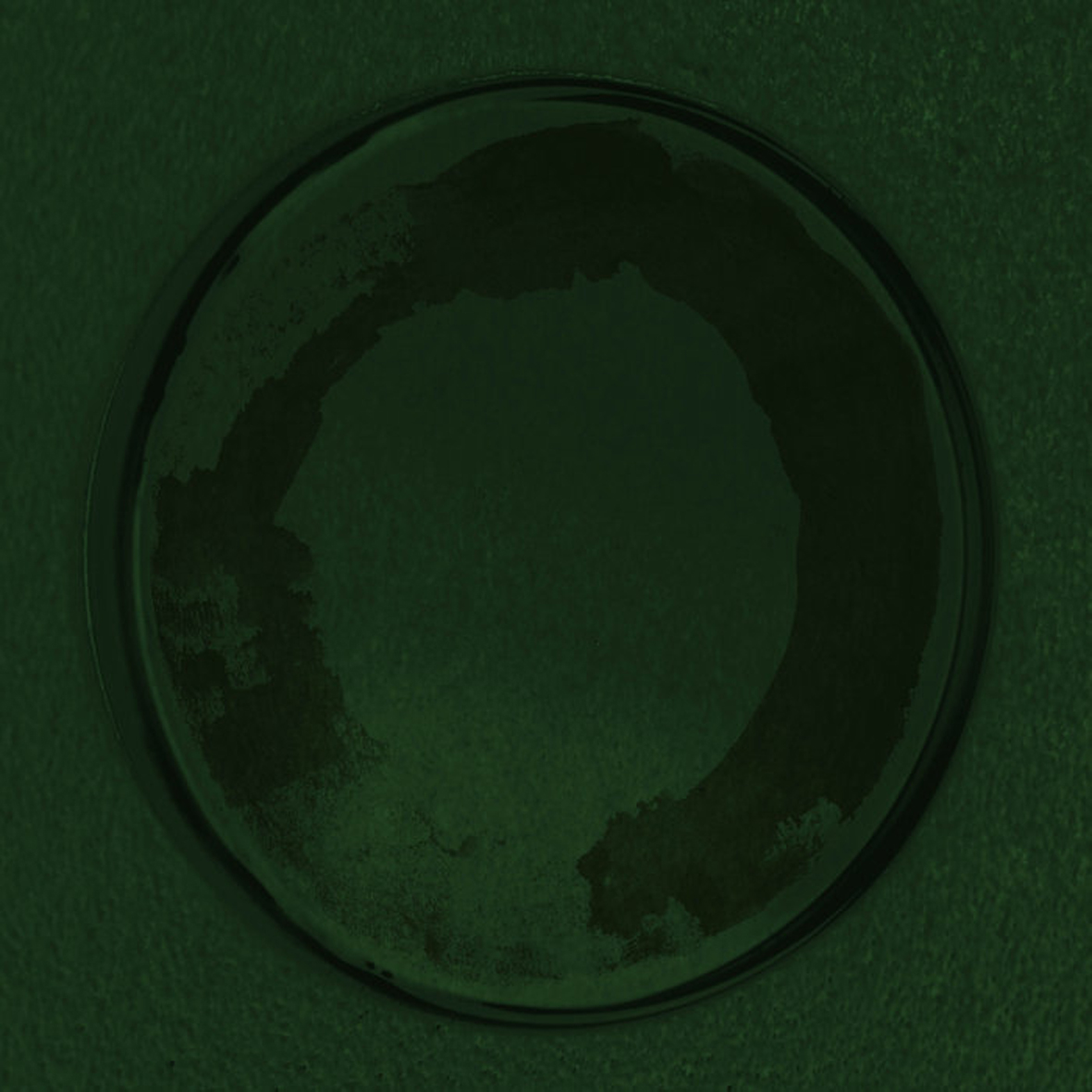
M. Geddes Gengras’s Collected Works (The Moog Years) was a huge album for me, but one of reasons that it is so great is that it distilled the best material from several tapes and several years of work.  I wish such retrospectives were more frequent: Gengras’s prodigious output has an exasperating tendency to dilute his artistry, as he is extremely restless in his creative evolution and it seems like every new step winds up publicly documented.  That tendency is probably cool for obsessive fans, but it also has the unfortunate result of leaving a voluminous wake of releases that fail to live up to their potential.  Granted, Gengras is never short on ideas–I just wish he would linger on them long enough to craft something lasting and great more often.  Consequently, this latest record under Gengras's analog techno guise is quite a wonderful surprise, capturing him in unwaveringly fine form.  This is exactly the kind of album that I was hoping for.
Despite my love of The Moog Years, Personable is probably my favorite of Gengras's many projects, as the pulse and mesmerizing repetition of techno is the perfect foil for his burbling and twinkling synthesizer wizardry.  More importantly, he seems to have deep intuitive grasp of the form's mechanics and knows how to use its components to maximum effect.  Also, his vision is anything but static: on 2012's Spontaneous Generation, he sounded like a sped-up, hyper-visceral twist on early Tangerine Dream.  Four years later, Oyster almost sounds like the work of a completely different artist: replacing barreling momentum with stripped-down, understated, and perversely hooky sophistication and crystalline clarity.  The excellent opener "Gambetti," for example, sounds like a somewhat caffeinated instrumental dub remix of a great Kraftwerk song.  At the very least, it is a dynamic wonder, embellishing its throbbing pulse with spectral and dissipating snatches of melody and a complex arsenal of textural and percussive touches.  In theory, a four-on-the-floor beat and a simple repeating bass line is about as straightforward as dance music can possibly get, but Gengras juggles his snares and cymbals so expertly that it all feels deliciously unpredictable, vibrant, and organic.
Curiously, the following "Window" is built from very similar components, but twists the groove into something much more stumbling and stuttering.  It is not quite as strong as "Gambetti," but it is a neat trick nonetheless, as it is filled with odd lags and idiosyncrasies that continually disrupt its forward motion.  It feels like there are three or four different musicians involved and they are all intent on ratcheting up the intensity, yet rarely ever manage to all be in sync at the same time.  The following "Oyster," on the other hand, returns to the unmolested and infectious momentum of the opener, but transforms the formula with the addition of blurting, dynamically shifting bass notes; a relentlessly insistent one-note synth pulse; and some appealingly dubby percussion flourishes.  It is probably the most minimal piece on the entire album, but it works beautifully because its unstoppable flow handily compensates for the lack of hooks.  Also, the lack of a strong melody provide lots of room for Gengras to play around with echoing and panning arpeggios and fills.  The highpoint of the album, however, is the divergent, lush, and fluttering closer "Cormorant."  While a thumping beat eventually kicks in, the piece is not at all typical for Personable, sounding much more like a gorgeously warm and melodic drone piece embellished by a wonderful array of hallucinatory squeaks, creaks, and echoes.
If Oyster can be said to have a weakness, it is only that the two songs that comprise its first half sound so similar to one another.  Viewed as variations on a theme, however, they do make an interesting pair.  More importantly, the weaknesses that I actually expected and thought were inherently unavoidable turned out not to be issues at all: while Gengras's modular synthesizers are absolutely delightful on a textural and dynamic level, they do not lend themselves at all well to multi-part compositions.  Everything is unavoidably pattern-based, so these four songs are all essentially sophisticated vamps on a groove.  In lesser hands, that would be a real problem when songs regularly tend to extend for 8, 10, or 12 minutes.  In Gengras's hands, however, these pieces rarely overstay their welcome and he manages to start and stop them with seamless grace.  The execution, lightness of touch, and attention to detail are all superb here–Gengras definitely makes the most of his inherently limiting set-up.  In fact, Oyster is easily one of his strongest albums to date, both creatively and in terms of sheer craftsmanship.
 
Read More
- Administrator
- Albums and Singles

Ecstatic offer a deeply arresting and definitive collection of Works by erstwhile Serbian factory worker-turned-synthesist Abul Mogard; containing selections from two cassettes released in 2012 and 2013 on Steve Moore and Anthony Paterra’s VCO Recordings, as well as a cassette only release last year on Ecstatic, never before available on vinyl.
Abul Mogard’s relatively unusual path to releasing music is well documented, but bears repeating here. Upon taking retirement from a job at a factory which he held for decades, Mogard craved the mechanical noise and complex harmonics of the industrial workplace, and found that the best way to fulfil that need was through electronic music - using a limited set-up of Farfisa organs, voices, samplers and a self-built modular system to realise a peaceful yet haunting, sweetly coruscating sound that resonates uncommonly with music from Leyland Kirby to Alessandro Cortini, or Fennesz and Tim Hecker.
The nine tracks on Works are soused in an emotional richness that’s hard to forget once experienced. Broad daubs of distorted bass and naturally glorious harmonic progressions paint panoramas of wide open, grey-scaled skies whilst equally conveying the intimate feel of a person with their nose to the machine, toiling for a sound or feeling that really means something to them, and by turns, us.
The fact that Mogard hails from an area hardly well-known for its synth music, and that he’s of an age where most people take up gardening or lawn bowls, rather than synth music, only helps to aid the enigma and magick surrounding this remarkable artist and his addictively emotional music.
More information can be found here.
Read More
- Administrator
- Albums and Singles

A virtual six-disc, 25-track masterpiece from Natural Snow Buildings, following up from their previous Vulpiano Records installments The Night Country and 2010 Vulpiano exclusive The Centauri Agent. As towering as Daughter of Darkness, a favorite release of mine from their impressive catalog and what introduced me to NSB in the first place, I am incredibly pleased to offer Aldebaran to you as a Netlabel Day exclusive. The release also includes beautiful album artwork, giving a hint to the unearthly content within.
More information can be found here.
Read More
- Administrator
- Albums and Singles

Hallow Ground continues their impressive recent run with two vinyl reissues from these erstwhile Coil collaborators and eternally provocative and intriguing iconoclasts.  Both of these releases were originally issued as very limited CDrs on the band’s own Anarcocks label in the mid-2000s, so they never managed to get the attention that they richly deserve, making this quite a worthy pair for a vinyl resurrection (one more so than the other, admittedly).  Unsurprisingly, the Coil influence is quite strong on both, as Massimo and Pierce traffic primarily in stuttering, hallucinatory electronics and eerie moods.  In fact, Jhonn Balance himself even contributes vocals (of a sort) to Toilet Chant’s "E2 = Tree 3."  If Black Sun Productions are derivative of Coil here, however, they seem to have been focused primarily upon the bizarre and unpredictable fare of the Unnatural History series.  More Coil-eque music in that vein is certainly fine by me, but each album also boasts at least one piece that admirably transcends that long shadow to blossom into something wonderfully beautiful and unique.
Toilet Chant was originally released back in 2004, in an edition of 99 numbered CDrs that each featured a no doubt highly collectable thumbprint/shitstain (Massimo and Pierce were, of course, no strangers to the base and scatological). Despite its more deviant, transgressive, and earthbound trappings, however, Toilet Chant is actually quite a complex and otherworldly suite of songs.  In fact, parts of it are legitimately brilliant.  Hallow Ground seem to have valiantly tried to eliminate as much of that potential cognitive dissonance as they could, as aside from not being shit-smeared, this reissue also no longer features the original cover art of two urinals in a graffiti-covered bathroom (though the new artwork could potentially be an abstract sphincter).
In any case, the music here often reaches some truly spectacular highs.  The opening title piece, for example, is essentially just six minutes of eerily inhuman howls, lying somewhere between grinding metal and a pack of wolves while still managing to sound improbably ritualistic.  Elsewhere, "E2=Tree 3" resembles a slinky, sexy, and Latin-tinged groove built from the dissonant whines and crunches of massive machinery.  I think it features actual wolves, as well, who perversely seem a lot less feral and a lot more intent on hitting the right notes than Jhonn Balance (he basically turns up just to yowl for the final minute).  Yet another highlight is "Glüewürmlitanz," which sounds a lot like a bagpipe drone piece might sound if the bagpipes were replaced by slithering and fluttering Lovecraftian horrors.  That is not an easy aesthetic to pull off.
The rest of the album definitely has its moments as well, though the remaining three pieces are somewhat hobbled by some arguable missteps.  The most bizarre and original of the remainder is probably the 13-minute "Spermatic Cord," which is a deeply abstract tour de force of ugly shudders, throbs, deep gurgles, and ominously dissonant drones.  It is more of an uncomfortably long vision of hell than a song though.  As for "Anarcocks Rising" and "Yesterdays Dream," they fall short solely because they contain actual recognizable instruments and attempts at conventional melody.  That would normally not be a deal-breaker, but the rest of Toilet Chant weaves such a perfect illusion of being a beautifully hallucinatory nightmare that any conspicuous evidence of human interference is like being splashed with cold water.
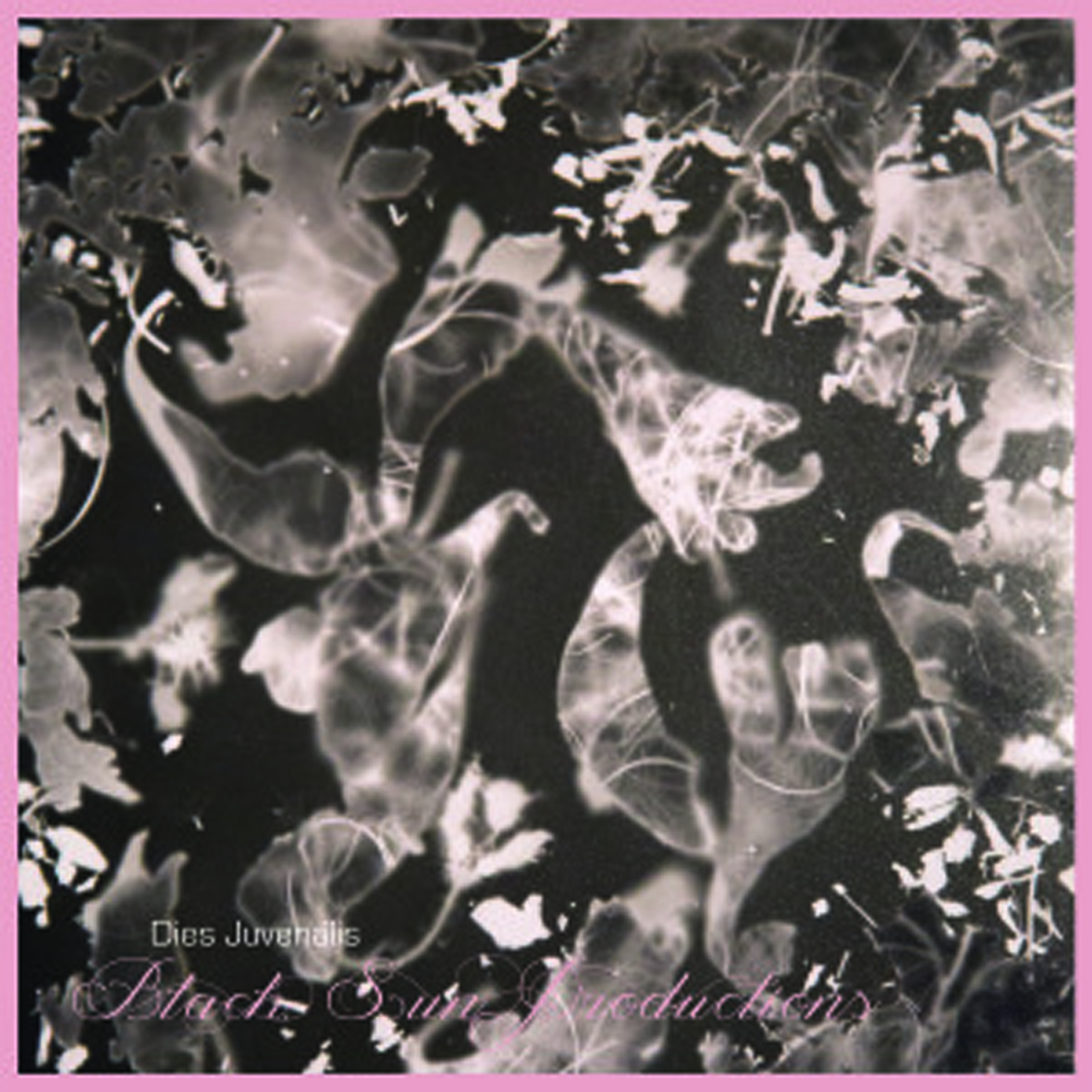
The considerably shorter Dies Juvenalis EP (2007) remains heavily Coil-influenced, but (for better or worse) sheds nearly all of the disturbing elements of Toilet Chant.  In fact, the opening "Percettive Riflessioni" is quite tender, melodic, and almost rapturously beautiful.  Built upon a dense chorus of stuttering and heavily processed voices, it sounds like the sort of religious music that someone like Bach might have made if he only had a laptop and microphone at his disposal (and possibly also a rooster).  There are also some snatches of classical music in there, but it is truly the chopped-up voices that do all the heavy lifting; the occasional orchestral swells only serve to intensify the epic feel of an already heavenly masterwork.
Unfortunately, opening Dies Juvenalis with such a perfect piece leaves nowhere to go but down afterwards.  The remaining two pieces are not necessarily bad though–they just feel extremely underwhelming beside the creative supernova that preceded them.  The title piece sounds like a cross between American Minimalism and a haunting soundtrack to a Japanese avant-garde film, as it combines a very Reich-ian marimba motif with eerily layered flutes and explosive snarls of brass.  The album then closes with "Veneration XXX," which the label describes as "an ethereal homage to pleasure and lust."  I guess that is as good a description as any, as it sounds like a haze of wordless vocals over a NIN-groove that took a massive dose of ketamine.  In any case, I could probably do without it.  I do not want to hear Black Sun Productions sounding like an industrial rock band sleepwalking though a jam–I want to hear Black Sun Productions being the exact opposite of that.  Oh well.  They cannot all be winners.  Adding to the sense that Dies Juvenalis exists only as a showcase for "Percettive Riflessioni" is the fact that different versions of "Dies Juvenalis" and "Veneration" were already featured on Chemism.  If Massimo and Pierce were that committed to filler, they would have been much better served by including two more versions of "Percettive" instead.
As I noted with Toilet Chant, Massimo and Pierce seem to be at their peak when they abandon conventional instrumentation altogether and just plunge wholeheartedly into hallucinatory abstraction.  When they do that, this EP is great.  They just do not do that nearly enough for my liking.  Though Dies Juvenalis is otherwise a fairly minor and insubstantial release, "Percettive Riflessioni" does admittedly offer nearly ten minutes of the duo at their zenith.  Thankfully, the digital version is still available through Anarcocks, so the merely curious need not splurge on import vinyl just to track down one absolutely unmissable song.
 
Read More
- Administrator
- Albums and Singles
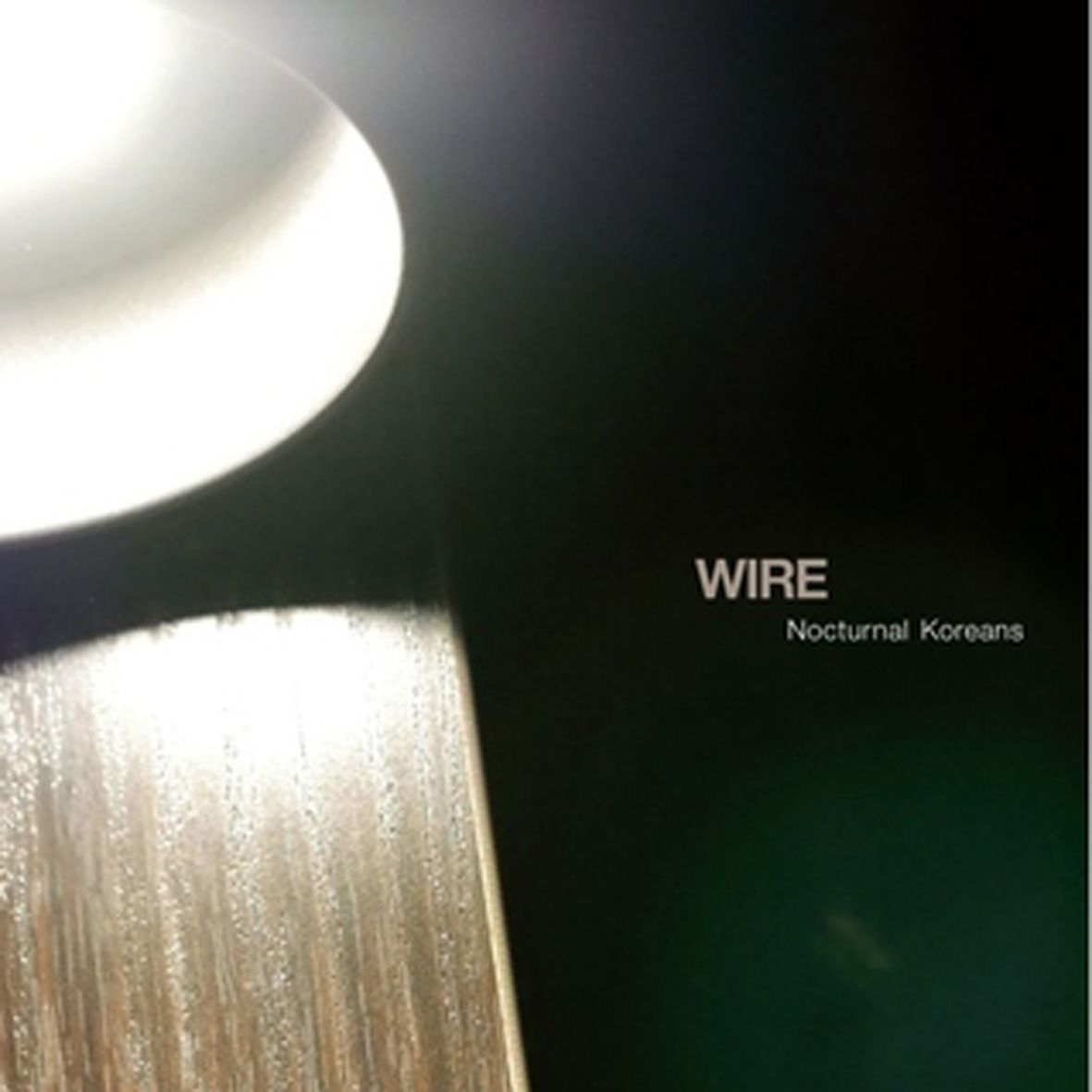 Wire’s latest mini-album is a somewhat darker, subtly more experimental, and arguably superior sister to their self-titled 2015 release.  In fact, these songs were all written during the very same period, but they were split off into their own release because they ostensibly shared a path directly opposed to the aesthetic of Wire: the self-titled album was a deliberately no-frills document of what the band actually sounds like when they play together in a room, while Koreans documents what they can achieve with studio enhancements and liberal editing.  Despite those very different approaches, the two albums do not actually seem all that different to my ears.  I guess I was hoping for a bit more of a radical departure than this.  While there are a few intriguing exceptions, Koreans mostly just sounds like more of the same hook-heavy and slightly off-kilter songcraft that I always expect from Wire.  That is certainly not a bad thing, but Nocturnal Koreans is definitely more solid than revelatory.
Wire’s latest mini-album is a somewhat darker, subtly more experimental, and arguably superior sister to their self-titled 2015 release.  In fact, these songs were all written during the very same period, but they were split off into their own release because they ostensibly shared a path directly opposed to the aesthetic of Wire: the self-titled album was a deliberately no-frills document of what the band actually sounds like when they play together in a room, while Koreans documents what they can achieve with studio enhancements and liberal editing.  Despite those very different approaches, the two albums do not actually seem all that different to my ears.  I guess I was hoping for a bit more of a radical departure than this.  While there are a few intriguing exceptions, Koreans mostly just sounds like more of the same hook-heavy and slightly off-kilter songcraft that I always expect from Wire.  That is certainly not a bad thing, but Nocturnal Koreans is definitely more solid than revelatory.
I have to admit that I was quite surprised by the amount of mainstream attention that this album has garnered.  I understand that Wire are no longer the prickly, contrarian, and boundary-pushing band of their youth and that there is quite a wave of nostalgia these days for the leading lights of the post-punk milieu.  However, Nocturnal Koreans is still a self-released album and Wire are not elder statesmen doing a valedictory lap to bask in their past glories.  Anyone hoping for another Pink Flag or 154 is definitely not going to find it here, as Wire are adults who have aged (fairly) gracefully and are now making very adult music.  They still have a healthy amount of angst, but it is very much of the understated variety.  On a fundamental level, I find it remarkable that a batch of well-crafted, cerebral, and sophisticated rock songs can make a blip in the current cultural landscape.  Even shorn of menace and eccentricity, Wire are not an easy sell, as these eight songs are coolly detached, distinctly unflashy, and peppered with inscrutable, cryptic, and obtuse lyrics like "I sent a message to your mobile home, I'm counting rings in a fish's bones."  As always, a decent amount of the band's wordplay is insightful or amusing, but what Nocturnal Koreans mostly offers is just a lot of catchy, polished, and mid-paced rock that is not dissimilar to 1979’s "Outdoor Miner."
All of it is quite easy on the ears, of course, but the best songs are definitely the ones that allow some bite, ominousness, or eccentricity to color Colin Newman's otherwise pristine and cool songcraft.  For example, the album's centerpiece ("Forward Position") completely eschews drums in favor of a languorously lush and brooding reverie and some of the album’s most unsettling and evocative lyrics ("I am black box, I remember").  The buoyant and rolling "Internal Exile" is another strong piece, embellishing its descending arpeggio groove with uncharacteristic touches like trumpets and a lap steel.  Unsurprisingly, the one piece that features Graham Lewis’s vocals ("Fishes Bones") is also quite memorable, unleashing a charming stream of non-sequiturs and plenty of vocal effects over a heavy groove.  A few more songs in a similar vein would have been quite welcome, as Lewis's infusion of character, cracked artiness, and gleeful absurdity is a wonderful counterbalance to Newman's perfectionism.  I can understand why the album took the shape it did, as the Newman-sung songs are considerably sharper and more fully formed, but some more anarchic experimentation, fun, and rough edges would have provided the contrast necessary to make the more chiseled songs stand out.  Of course, I am some writing for an experimental music website rather than, say, Rolling Stone, so catering to my taste may very well be commercial suicide.  Lack of objectivity aside, however, it is hard to truly love an album where so much character and idiosyncrasy has been sanded away.  Truly liking it, on the other hand, is quite easy.
Minor grievances aside, Nocturnal Koreans is unquestionably a strong and consistent album (albeit quite a brief one).  My sole significant frustration is that the laser-focus on production and taut, propulsive, and (fairly) conventional rock structures mutes the band’s personality to a less-than-ideal degree.  Consequently, this is a very smart, likable, and catchy release that only occasionally catches fire or hints at greatness.  The flipside of that, of course, is that it never ever falls flat, lags, or seems half-baked.  If the Wire of 2016 excels at one thing, it is definitely the mechanics of songcraft.  While professionalism is admittedly not high on the list of traits that I excitedly hope for when I put on an album, I definitely appreciate it when a band knows when to end their songs, knows how to keep their momentum going, and makes damn sure that every single song has a strong enough hook to be memorable.  At its worst, Nocturnal Koreans consistently achieves all of those things.  At its best, it contributes one more entry ("Forward Position") into the canon of great Wire songs.
 
Read More
- Administrator
- Albums and Singles
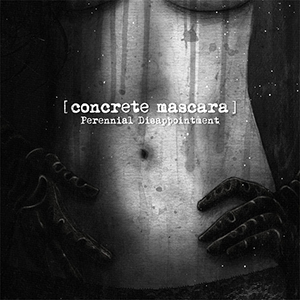 New Jersey based harsh electronics trio Concrete Mascara have a handful of limited releases since their inception in 2011, but Perennial Disappointment is only their second full length album, following 2014's Blossoms of Shame. The title is obviously a tongue-in-cheek, self-effacing joke, however, because the eight songs that comprise it seethe with menace, creating a dark, violent environment via aggressive vocals, destroyed electronics, and perverse attempts at building rhythm.
New Jersey based harsh electronics trio Concrete Mascara have a handful of limited releases since their inception in 2011, but Perennial Disappointment is only their second full length album, following 2014's Blossoms of Shame. The title is obviously a tongue-in-cheek, self-effacing joke, however, because the eight songs that comprise it seethe with menace, creating a dark, violent environment via aggressive vocals, destroyed electronics, and perverse attempts at building rhythm.
The opening moments of "The Flesh of This World" are the most peace to be had on this album, and even that is a stretch.The trio cast a menacing rumble, slow but deliberate, with an open atmosphere, but one that channels impending doom.From that point until the closing moments, Perennial Disappointment does not relent.The following, "Area Trinity," is an immediate burst of crunching digital noises courtesy of Andrew Wilmer and Jack Scanlan and indecipherable (but obviously irate) screamed vocals from Frank Cordry (I assume, the credits are sparse at best).The feel is more of a harsh noise one, due to the sustained squall the band generates, but interrupted by some stuttering effects and overall variation in sound, with hints of structure being upset by harsh chaos."Snake Skin Stilettos" is a similar monolith of distortion, with a few passages of sickly, squelching synthesizers before dissolving into a painfully overdriven crunch.
At other times on this disc, Concrete Mascara opts for a more structured, at times almost rhythmic approach to the vile force that spews forth."Utopian Nightmare" is built around a pounding noise that does not stop, throbbing like a headache as Cordry's manic, indecipherable screams cut through.Perhaps most jarring, however, is the abrupt end the song comes to, which is somehow more forceful than any of the noisier moments.
On "Delusion of Sacrifice," the rhythm section is approximated by a machine gun like thud, as the whole piece is presented in a chaotic, but structured form that is heavily constructed from sheer anger and aggression.The vocal sections, again hysterical and heavily processed, do not appear until the second half, and the whole thing ends in a brilliant collapse.The trio dials back the tempo, but not the heaviness, for "Mouth of Flies, Tongue of Maggots."The slower pace is obvious from the lurching opening rhythms, and while the piece is more of a burn than a blaze, it is no less oppressive and limps away wonderfully.
The album culminates strongly in the final "Death Trigger Impulse."The sound is similar to what preceded it, but notched up a bit more into a sprawl of shrill, stabbing electronics and an overdriven buzz.Even though a pseudo-rhythmic layer of noise and heavily delayed vocal part appear, everything is engulfed in an intense, supernova like wall of noise that peaks and then stops abruptly.
Perennial Disappointment is not a record anyone could describe as nice or even potentially pleasant, but I doubt those are the adjectives Concrete Mascara were thinking when they devised this harsh suite of aggression.While terms like harsh and violent may be tossed about frequently when describing this type of music, they are entirely fitting for this album, and with a level of polish and realization that is extremely impressive.
samples:
Read More
- Administrator
- Albums and Singles
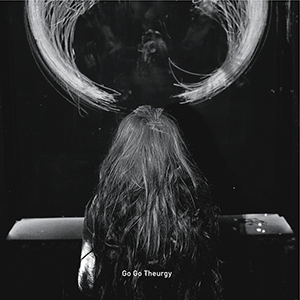 Go Go Theurgy is Polish composer Anna Zaradny's first album in eight years, following 2008's Mauve Cycles. Like that release, there is a significant amount of experimentation and abstraction to be heard on this record's two side long composition, yet for all its dissonance there is clearly order here. Order that takes the form of deconstructing and rebuilding more conventional pop and electronic music elements into completely unique contexts. It is challenging but captivating all the same.
Go Go Theurgy is Polish composer Anna Zaradny's first album in eight years, following 2008's Mauve Cycles. Like that release, there is a significant amount of experimentation and abstraction to be heard on this record's two side long composition, yet for all its dissonance there is clearly order here. Order that takes the form of deconstructing and rebuilding more conventional pop and electronic music elements into completely unique contexts. It is challenging but captivating all the same.
 
The opening moments of "Theurgy One" are rather sparse, considering what is to come.What is first a sequenced pattern of synthesized tones is soon engulfed by buzzing, machinery like drones that add a distinct darkness.One of the striking things that is immediately noticeable about Zaradny's work is its complexity, and her use of multiple, yet complementary layers of sound that give an impressive depth, while still retaining a coherent structure.
Electronic pulses soon pop up that mimic something that could appear on a standard techno record, but within this factory-like ambience, they have a character all their own.Mangled synthesizer leads appear to quickly transitions into sweeping, symphonic drama and back again.Amidst these bent tones and idiosyncratic sequences is an expanse of warm crackles and textures, making for an avant garde lead-in to a more conventional, pulsating techno conclusion.
The other half, "Theurgy Two," picks up where its predecessor left off.The opening moments have a more structured, sequenced sound to them, but the same bizarre, dissonant quality to the sound overall that is idiosyncratic to say the least.Her intentional use of rigid, dance-music like repetition with these sounds results in a sort of abrasive, slightly grating sound that eventually relents to showcase droning tones and clicking textures.
As the composition moves on, Zaradny introduces nasal, buzzing synthesizers that resemble a modern take on 1970s sci fi soundtrack schlock with droning, drill like vibrations and harsher passages of electronics.But even within these more dissonant sounding moments, she creates some distinctly glorious, beautiful moments of rich drama, sweeping electronic passages that are completely enrapturing.The work culminates into a rich, complex, and nuanced nod to composition that ends the record on a delicate, calm note.
Anna Zaradny's work on Go Go Theurgy shines most clearly in her clever use of elements associated with more conventional music, such as sequenced synthesizers and rhythmic passages, but employed in such a way that they bear little superficial resemblance to what would be expected.Instead they function on an almost subliminal level, drawing me into a sonic world that is utterly unique, bizarre, and fascinating for its entire duration.
samples:
 
Read More
- Administrator
- Albums and Singles
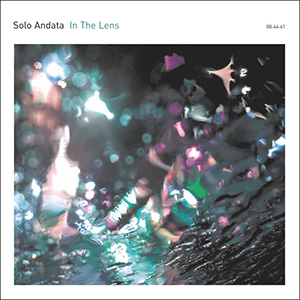 For their fourth record, the duo of Kane Ikin and Paul Fiocco took a different approach, and decided to revisit fragments of previous recordings that lay forgotten on various hard drives and cassette tapes for a multitude of years. Beginning with these elements, they then reworked the material and recorded new parts, making these recordings a sort of hybrid of unreleased works and new material. Because of that, In The Lens may at times feel more like a collection of songs rather than a full-fledged album, but that is no major detriment considering how well these compositions are executed.
For their fourth record, the duo of Kane Ikin and Paul Fiocco took a different approach, and decided to revisit fragments of previous recordings that lay forgotten on various hard drives and cassette tapes for a multitude of years. Beginning with these elements, they then reworked the material and recorded new parts, making these recordings a sort of hybrid of unreleased works and new material. Because of that, In The Lens may at times feel more like a collection of songs rather than a full-fledged album, but that is no major detriment considering how well these compositions are executed.
My first impression of this album was how it almost felt like a collection of miniatures, given most of the song’s relatively brief durations (only three clock in at over four minutes).Working in the context of these shorter songs, it allows the duo to experiment with a multitude of techniques that, while perhaps not likely to work as well in a lengthier composition, manage to be extremely effective in its more concise format.For example, most of "Left" seems to be constructed from plucked acoustic guitar strings and what sounds like a person writing with a pencil."Dancer" resembles a collection of bass string plucks and ambient space, with maybe a bit of horn tossed in for good measure.The structure is simple and fragmented, and over a longer duration it could end up a scatter-shot mess, but at a succinct minute and a half, it is excellent.
The duo also does an exceptional job at working with their diverse instrumentation to create extremely dynamic pieces that are simultaneously recognizable and yet entirely alien."Late Night Games With Her" seems to be constructed largely of chimes and guitar, but both are utilized in quite unconventional ways, and when blended with more ambiguous sounds, it never seems to stand still in its brief three minute duration. The slightly messy "Porcelain Blue" is a goulash of sounds, with clean, gentle tones and maybe a woodwind or two thrown in.Even with its intentional abstraction, there is a delicateness to it that cannot be denied.
A few pieces stand out strongly as being more structured and composed in nature.While there is still an overall loose structure to "From All The Broken Pieces", Ikin and Fiocco bring in more traditional bits of melody and rhythm to create something that feels more like a conventional song, yet still fits in nicely with the remainder of the album.Similarly, the concluding "Canvas" is comparably lush, layered with strummed guitar and keyboard.There is more instrumentation present, but as expected, it is not easily identifiable, yet entirely captivating.
The overall vibe given off by In The Lens is a sort of abstract take on late night mellow jazz music.While Fiocco and Ikin's use of what appears to be piano and upright bass throughout these 13 pieces make for an obvious linkage, there is a somber, but not sad mood throughout.For the whole length of the record, there is a calmness to it, but never one that becomes flat or dull.There is a definite sense of relaxation to be had, but not in a trite, clichéd sort of new age way.
samples:
 
Read More
- Administrator
- Albums and Singles
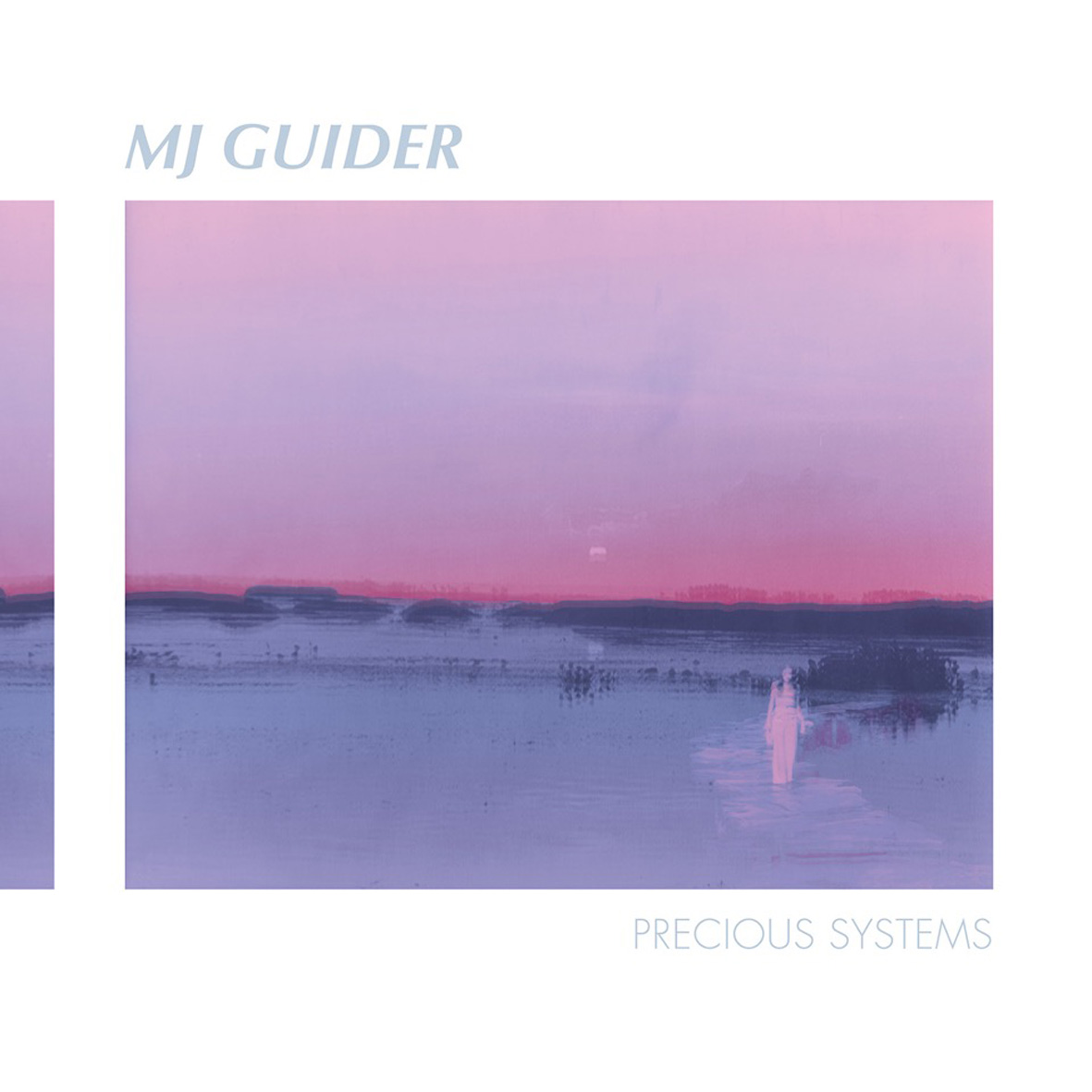 After a bit of a long slumber, Kranky has resurfaced with the first full-length from New Orleans’ Melissa Guion.  Guion’s previous discography is a bit lean, as she has previously only released one cassette back in 2014, but she seems to have quite a fully formed aesthetic that will no doubt delight fans of the Kranky milieu.  In fact, it is quite hard to discuss Precious Systems without making favorable comparisons to Grouper, as Guion is quite a similarly enthusiastic proponent of hazy, reverb-swathed vocals.  Musically, however, MJ Guider is far more indebted to shoegaze and gauzy 4AD-style Romanticism, crafting propulsive and hook-filled songs that feel artfully hollowed-out and slowed to a narcotic crawl.
After a bit of a long slumber, Kranky has resurfaced with the first full-length from New Orleans’ Melissa Guion.  Guion’s previous discography is a bit lean, as she has previously only released one cassette back in 2014, but she seems to have quite a fully formed aesthetic that will no doubt delight fans of the Kranky milieu.  In fact, it is quite hard to discuss Precious Systems without making favorable comparisons to Grouper, as Guion is quite a similarly enthusiastic proponent of hazy, reverb-swathed vocals.  Musically, however, MJ Guider is far more indebted to shoegaze and gauzy 4AD-style Romanticism, crafting propulsive and hook-filled songs that feel artfully hollowed-out and slowed to a narcotic crawl.
For better or worse, the opening "Lit Negative" captures Guion at her absolute zenith, disrupting her languorous dreampop with a wonderfully massive two-note guitar hook.  She also embellishes her stark and hazy aesthetic with a groove that can sound almost sensuous at times, albeit still in her characteristically bloodless way.  "Bloodless" is definitely one of the best ways to summarize the MJ Guider vision, as nearly every choice that Guion makes seems intended to fuel an atmosphere of spectral detachment.  Correspondingly, her set-up is admirably stark and DIY, as these nine pieces were recorded with little more than a guitar, a drum machine, and a Roland tape echo box.  Naturally, such a palette lends itself quite readily to slow-motion bleariness and a few songs regrettably err into plodding goth-lite mopery.  For the most part, however, Guion shows a real knack for both hooks and atmosphere.  Precious Systems' strongest moments tend to always be those where Guion transcends her murky reverie rather than throws herself wholeheartedly into it.  When it comes right down to it, I want to hear an album by a human and not an album by an echo box, so I definitely prefer the moments where something forcefully emerges from the homogenizing and hallucinatory fog.
In some cases, that "something" can be as simple as a strong pulse, as the 10-minute "Evencycle" is little more than a disco thump and lush "locked groove" loop of Guion’s hushed voice and some understated guitar shimmer.  It never quite evolves into anything more, but the various components feel like they are gradually falling out of phase with one another due to subtle shifts in the beat.  It’s a neat trick, if an unambitious one.  The much shorter "Second Surface," on the other hand, eschews a beat entirely.  Nevertheless, it easily stands among MJ Guider's best work due to its gorgeously warm chord progression, heavenly vocals, and wonderfully hissing and soft-focus textures.  Some of the lesser highlights occur when Guion instead attempts to sound like a New Order that has been sucked dry by a vampire, as she does on the driving "Triple Black," adhering to a tight pop structure and unleashing an wonderfully echoey guitar hook.  The closing "Fiction Control" delves into similar territory with slightly less success, occasionally becoming over-cluttered, but eventually catching fire once the beat is stripped down to just drum machine claps.
For the most part, I quite like this album, despite its imperfect execution.  There is a definite vision at work here and a decent amount of hookiness to back it up.  The only real issue that I have is that Guion does not always play to her strengths and often seems content to merely fill a cool niche.  She is far more compelling when she balances her hazier, woozier tendencies with something a bit more visceral or sensual though, such as the bad-ass guitar swells in "Lit Negative" or the sleepily sexy groove in Green Plastic’s "Prima."  Also, Guion’s detached and bleary aesthetic frequently has a tendency to undercut her gifts as a songwriter.  I just want MJ Guider’s bleary, drugged aesthetic to be a springboard for something better and more distinctive rather than just an endpoint, I guess. Those minor grievances aside, Precious Systems is a legitimately solid album that Kranky fans will likely eat up.  There is a lot of potential here and the few songs where it is fully realized are a legitimate delight.
 
 
 
Read More
- Administrator
- Albums and Singles
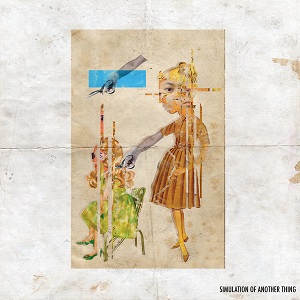 San Diego’s Steve Flato has remarkable and unpredictable range—from structured harsh noise (Mara’s Daughters) and hallucinogenic sine assaults (Salon de Flato) to mathematical ambience (This Is Our Last Cry Before Our Eternal Silence), and now, with Simulation of Another Thing, orchestrated soundtracks. Recorded with a trio featuring trombone, tuba, and French horn, Simulation blends melody, voice, field recordings, and improvised noise across three varied and affective songs (with an emphasis on the sinister). It comes in at a concise 30 minutes, but Flato packs a lot of great performances and unusual choices into that space, including one that combines the reassuring voice of a hairdresser with the steady pulse of a drum machine.
San Diego’s Steve Flato has remarkable and unpredictable range—from structured harsh noise (Mara’s Daughters) and hallucinogenic sine assaults (Salon de Flato) to mathematical ambience (This Is Our Last Cry Before Our Eternal Silence), and now, with Simulation of Another Thing, orchestrated soundtracks. Recorded with a trio featuring trombone, tuba, and French horn, Simulation blends melody, voice, field recordings, and improvised noise across three varied and affective songs (with an emphasis on the sinister). It comes in at a concise 30 minutes, but Flato packs a lot of great performances and unusual choices into that space, including one that combines the reassuring voice of a hairdresser with the steady pulse of a drum machine.
Album opener "Realistic Binaural Haircut" stands out as one of the more unusual and satisfying tracks Steve has ever recorded. Its primary elements are a burbling synth, a plodding tom-tom rhythm, several comedic horn sequences, and a hairdresser who whispers in a semi-seductive tone about highlights, layers, and split ends. She moves from left to right in the stereo, recommending hair colors and magazines while a steady pulse of electronic signals seeps into the mix. At the same time, a current of brassy tones burble into the foreground like an excited Shriner parade drawing interlocked figure-eights in the air. If the rest of the song, which jumps into double time halfway through, didn’t sound sound so intense, "Binaural" might come across like a joke. Instead, it revels in a Matmos-like confusion of driving noise and playful improvisations, both severe and mischievous.
"Dissonance Quartet" and "Simulation of a Thing at Owl Creek Bridge" tread on more somber ground. They’re moodier and twilit, especially "Dissonance," with its cavernous string melodies and spaced-out synths. There’s a touch of film noir about it, a romantic evocation of silhouetted detectives and half-seen movements that makes the piece feel tailor-made for the movies. "Simulation" travels further into expressionistic territory with steady drones and textured, almost empty field recordings. More like a Rorschach test than a cinematic score, the horns, faded environmental sounds, and electronic miscellany that populate its middle portion are porous and flexible, or hard and reflective, but definitely material, definitely bearing weight. The particular thing at Owl Creek Bridge that the piece is meant to simulate stays out of sight. Rather than clarify its qualities, Steve Flato chooses to obscure them, inviting his audience to wander into the mystery a little ways. Besides, there need not be a thing at Owl Bridge for the song to work (and Ambrose Bierce readers will probably read the reference differently anyway). By the time the album’s done, the listener has seen and felt its presence too, not as a definite thing, but as an enigma.
samples:
 
Read More

